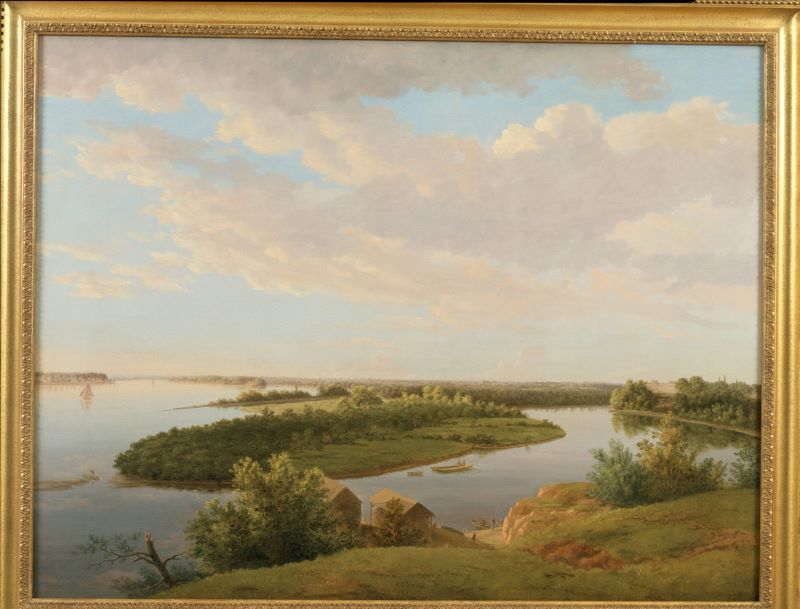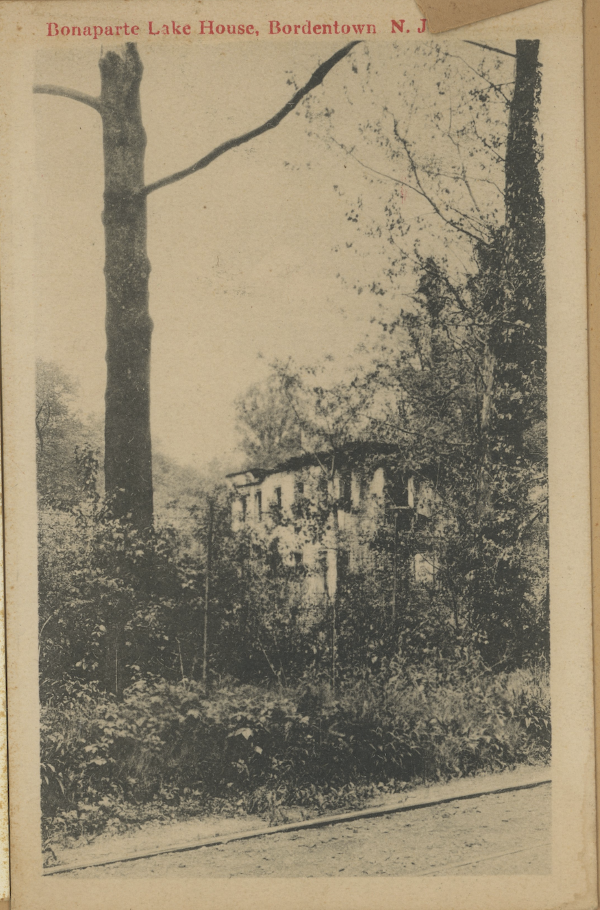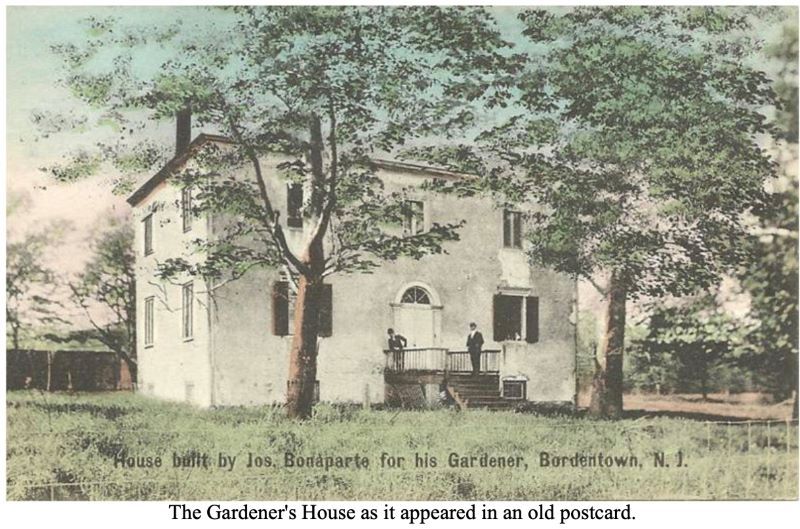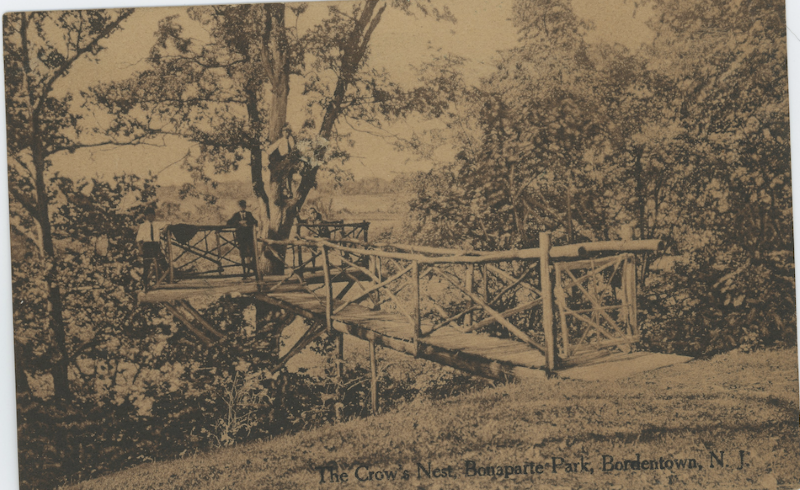Last-Minute NYC Holiday Gift Guide 🎁
We’ve created a holiday gift guide with presents for the intrepid New Yorker that should arrive just in time—


From 1816 to 1839, Joseph Bonaparte (1768-1844), the older brother of Napoleon and King of Naples and Spain, lived in an estate named Point Breeze on Park Street and Route 206 — overlooking the Crosswicks Creek and the Delaware River — in Bordentown, New Jersey, 53 miles southwest of New York City. After invading Spain, an unreliable ally of the French Continental System’s trade blockade of Britain, French imperial forces deposed the Spanish Bourbon ruling dynasty, and Napoleon named his own brother as King of Spain in 1808.
Last fall, the State of New Jersey, the city of Bordentown, and The D&R Greenway Land Trust, a preservation nonprofit, bought the remaining 60 acres of this estate for $4.6 million, which a Catholic missionary organization had owned since 1941. In the upcoming years, this land, which in the early 19th century featured dense woods, carriage trails, and steep embankments will become a New Jersey State Park where visitors will be guided by interpretative signs and audio tours.
The buildings once occupied by the missionary organization will house Bordentown’s City Hall and Police Station. The area will also feature a museum, exhibiting Philadelphia corporate lawyer Peter Tucci’s collection of Joseph Bonaparte memorabilia. Tucci’s collection is the largest private collection of Joseph Bonaparte’s objects, which made him the recipient of France’s most prestigious award, the title of Knight of the French Legion of Honor in 2005. Napoleon Bonaparte founded this award in 1802 to recognize the service to France by illustrious men. Since 1962 the award is given to men and women, foreign or French. Tucci’s collection includes letters, coins, paintings, and furniture,

A few weeks after Napoleon’s 1815 defeat at Waterloo by British forces, Joseph Bonaparte escaped under the alias Monsieur Surviglieri onboard an American brigantine. Fortunately for Bonaparte, although English inspectors boarded the ship, they did not find him. It is likely that if Bonaparte had stayed in France, the restored Bourbon monarchy under Louis XVIII would have executed him.
Joseph Bonaparte’s entourage included his Spanish aide-de-camp Unzaga, his cook François Parrot, his secretary Louis Maillard, whose clothes had some of Bonaparte’s money sewn into them, and his American interpreter James Carret, who served as a valuable liaison for Bonaparte’s stay in the United States. The group arrived in New York City on August 20, 1815, with Bonaparte’s new self-proclaimed title, the Count of Survilliers. Unfortunately, Bonaparte’s stay in New York City was brief, as he was told by Mayor Jacob Radcliff to petition for asylum directly from president James Madison. On his way to Washington, Bonaparte received word in Philadelphia that he could stay in the United States if he kept a low profile. Until his move to his country estate in Point Breeze, New Jersey, Bonaparte lived in the Lansdowne House in Philadelphia, which had been the house of John Penn, the last colonial governor of Pennsylvania.

Bonaparte acquired his Point Breeze estate in July 1816 from Long Island resident Stephen Sayre, who had been High Sheriff of London and had even served as Benjamin Franklin’s secretary. Sayer had acquired this estate in 1783, which had been owned several generations back by Joseph Borden (1687-1765), the founder of Bordentown. By 1835, Joseph Bonaparte expanded his estate from 211 to 1,800 acres. The centerpiece of Bonaparte’s estate was a three-story mansion of 38,000 square feet that featured an impressive wine cellar and a luxurious library. The estate also featured decorative gardens, 12 miles of coach trails with seven brick bridges, and underground tunnels leading to a man-made lake.
Of the Point Breeze estate, the only surviving structure from that period is Bonaparte’s secretary Louis Maillard’s house, built around 1820. The original sites of Bonaparte’s mansions contain vaulted escape tunnels that might have some archeological value. Other ruins include a brick bridge. The Maillard house became part of the National Registry of Historic Places in August 1977. The land trust that acquired the estate will restore the Maillard’s house (gardener’s house), and replicate the vegetable gardens that once flourished at Point Breeze.

In its heyday, Point Breeze was a destination for upper-class Philadelphians interested in seeing Bonaparte’s European art collection, which included works by Rubens, Rembrandt, and Frans Snyders. One of the main paintings adorning Bonaparte’s 30-room mansion was Jacques-Louis David’s Napoleon Crossing the Alps. While at Point Breeze, Bonaparte also received prominent figures such as Marquis de Lafayette, John Quincy Adams, Daniel Webster, Henry Clay, and signer of the Declaration of Independence Francis Hopkinson. Presumably, Joseph Bonaparte even received a Spanish and Mexican delegation, led by General Francisco Javier Mina in the summer of 1817, seeking him as a potential monarch of an independent Mexico.

Although the Point Breeze estate was Bonaparte’s main estate where he spent most of his time while in the United States, this was not his first land acquisition in the country. Bonaparte first bought James Donatien Le Ray de Chaumont’s estate in New York’s Jefferson County in 1815. He made this purchase through James Carret, who had grown up in New York State and had met Bonaparte through Le Ray de Chaumont while he was in hiding at the Chateau de Blois in the Loire Valley. Bonaparte also acquired his estate in New Jersey through Carret. It was not until 1817 when New Jersey permitted foreigners from countries that were not at war with the United States to hold property.
Joseph Bonaparte’s North Country New York estate, which he had purchased with carriages full of silver and furniture worth 600,000 francs, consisted of 25,000 acres of mostly virgin forests between the Black River and the Adirondacks. Lake Bonaparte, previously known as Lake Diana, near Harrisville, New York is a reminder of Joseph Bonaparte’s time in northern New York.
James Donatien Le Ray (1760-1841) was the son of Jacques-Donatien Le Ray, also known as the “French Father of the American Revolution,” for his friendship with Benjamin Franklin and his financial support of the American revolutionaries. James Le Ray de Chaumont had moved to the United States in 1785, acquiring American citizenship in 1788 through marriage, and eventually purchasing 350,000 acres in northern New York, to later become known as the “Father of North Country.” From this period, the LeRay Mansion in Fort Drum, New York, which dates back to the early 1800s, survives as a historic site. LeRay Mansion has been part of the National Registry of Historic Places since 1974. US Army Fort Drum, where the Le Ray mansion is located, can be visited by civilians with valid photo identification.
Next, read about why Napoleon Bonaparte’s penis is stored in New Jersey!
Subscribe to our newsletter